Flowers are amazing because they tell stories! In different cultures, flowers have special meanings that convey messages of love, friendship, sorrow, or celebration. It’s like they have their own secret language that everyone can understand, no matter where they’re from. When we give someone a bouquet, we’re not just giving them flowers, but also sharing our feelings, memories, and the essence of the moment.
Same is the case with gardening. You could be a pro gardener or just starting out, taking care of your own little green patch brings so much joy. There’s something calming and healing about digging in the soil, planting seeds, and watching them grow into beautiful blossoms. It feels like witnessing a miracle right in front of you.
With that said, and being a gardening hobbyist – I’m learning about some fascinating flowers that start with K. They have unique colors and features that make any garden more interesting. Each of them has a special story and can bring happiness to anyone who sees them.
So, the next time you appreciate flowers, take some time to explore these captivating flowers that start with the letter K, and let their beauty enchant you.
24 Flowers That Start With K
1. Kaffir Lily – Burst of Color in Late Winter
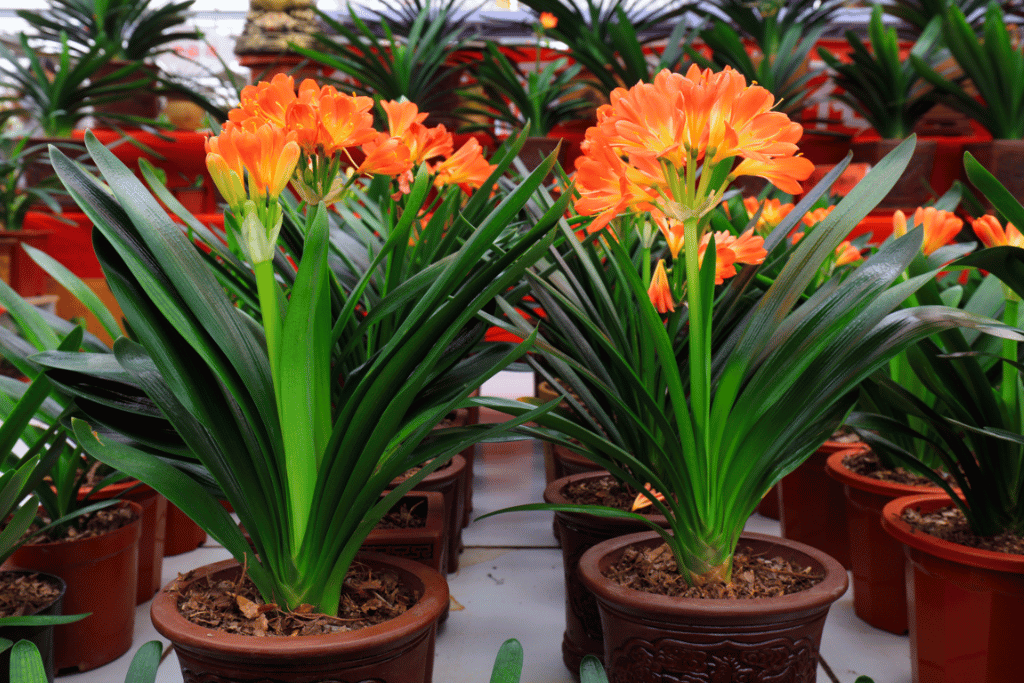
Kaffir Lily, scientifically known as Clivia miniata, is a captivating flowering plant native to South Africa. This perennial produces clusters of trumpet-shaped flowers in shades of orange, red, and yellow. Its ability to bloom during late winter and early spring adds a burst of color to gardens when most plants are dormant.
Kaffir Lily’s adaptability to low light conditions and its resilience make it a favored choice for indoor cultivation. Its striking appearance brightens up indoor spaces and serves as a reminder that nature’s beauty can flourish even when the world outside is still awakening. The plant’s lively blooms symbolize hope and vitality.
2. Knautia – Whimsical Blooms in Cottage Gardens
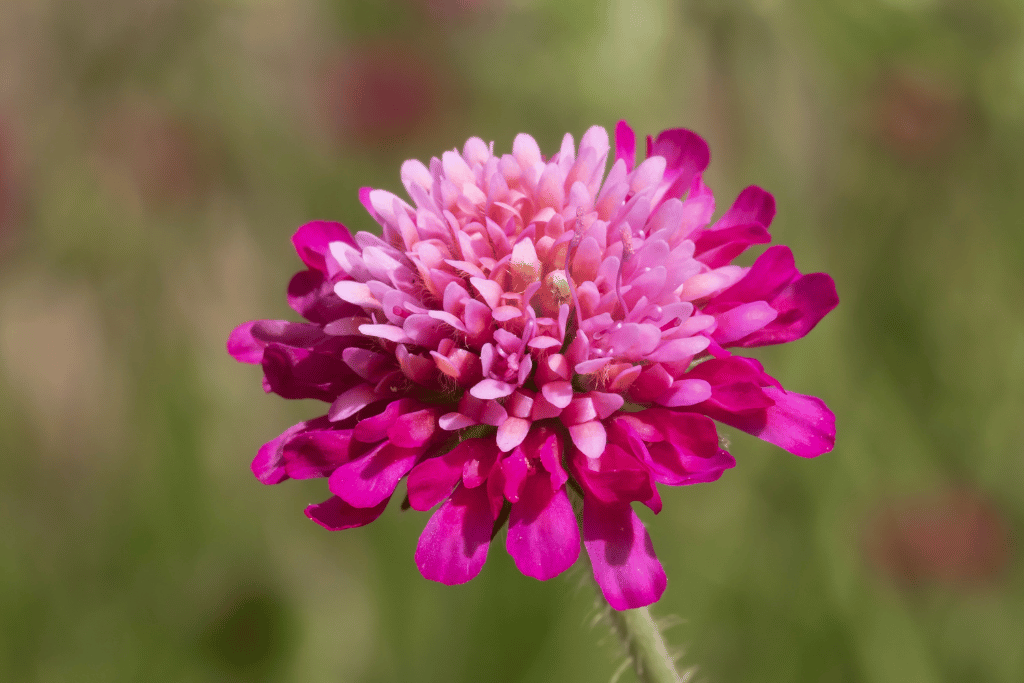
Knautia, a genus of flowering plants, graces cottage gardens with its charming and whimsical blooms. Native to Europe, these plants produce globe-like flowers in shades of pink, red, and purple. The intricate structure of the flowers, with tiny florets forming a larger ball, adds to their visual appeal.
Knautia’s ability to attract pollinators like bees and butterflies and its preference for sunny locations make it a valuable addition to gardens seeking to support local wildlife. Its rustic charm and free-flowering nature evoke a sense of nostalgia, harkening back to traditional cottage garden designs that celebrate the simple joys of nature.
3. Kalmia – Elegance in Evergreen Foliage
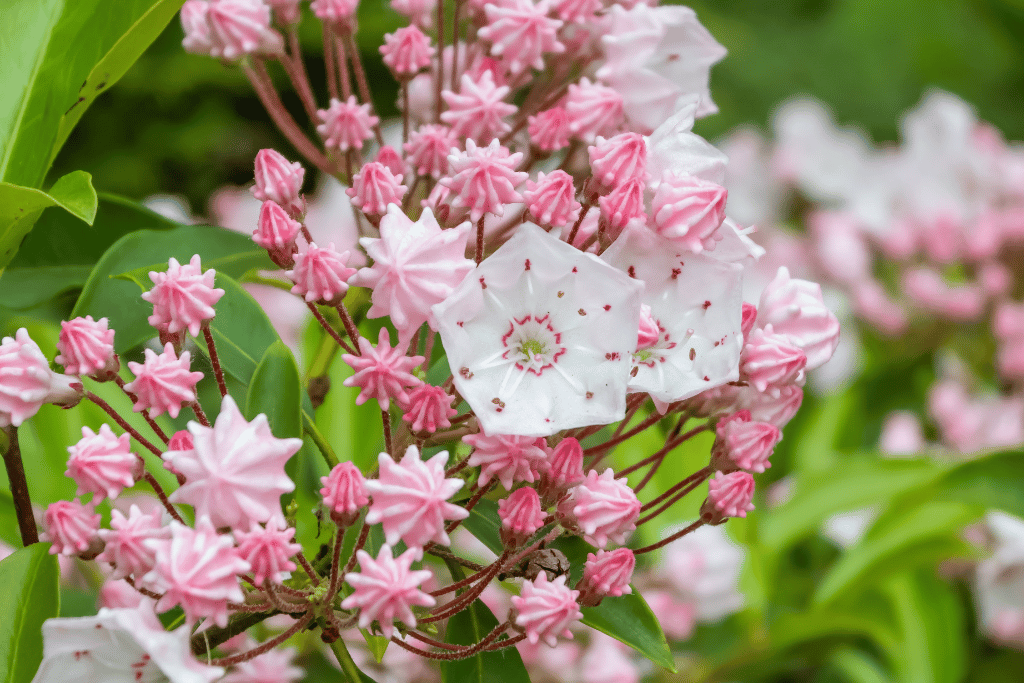
Native to North America, Kalmia produces clusters of intricate flowers that range from white to shades of pink. The glossy leaves provide year-round interest in gardens. Kalmia, commonly known as Mountain Laurel, is an evergreen shrub appreciated for its elegant foliage and delicate blooms.
Kalmia’s resilience in various soil types and its tolerance for shade make it a versatile choice for woodland gardens and shaded areas. Its flowers, often likened to miniature works of art, attract pollinators like bees and butterflies. Kalmia’s enduring presence reminds us of the understated beauty that thrives throughout the changing seasons.
4. Kangaroo Paw – Unique Blooms from Down Under
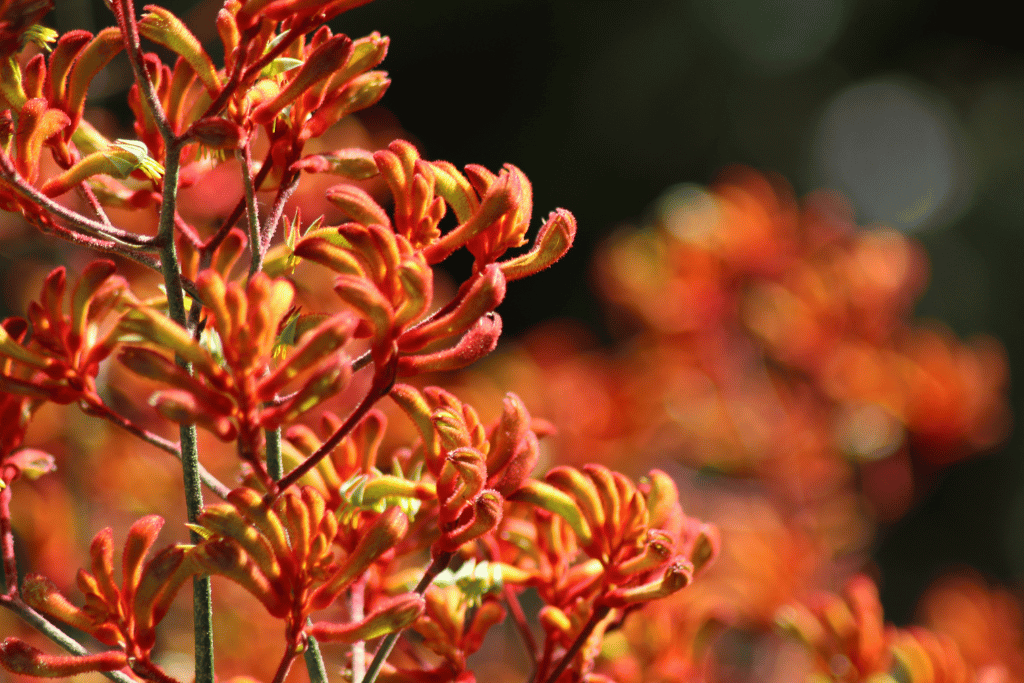
Kangaroo Paw’s unique appearance and its preference for well-drained soil make it a prized addition to gardens and landscapes seeking a touch of Australian flair. The intricate blooms not only captivate human admirers but also attract nectar-feeding birds, showcasing nature’s ability to create wonders that appeal to various species.
Scientifically known as Anigozanthos, is a distinctive flowering plant native to Australia. Its name is derived from the resemblance of its flowers to a kangaroo’s paw. The plant features long stalks with fuzzy, tubular blooms that come in an array of colors, including red, orange, and yellow.
5. Knapweed – Wild Beauty in Native Landscapes
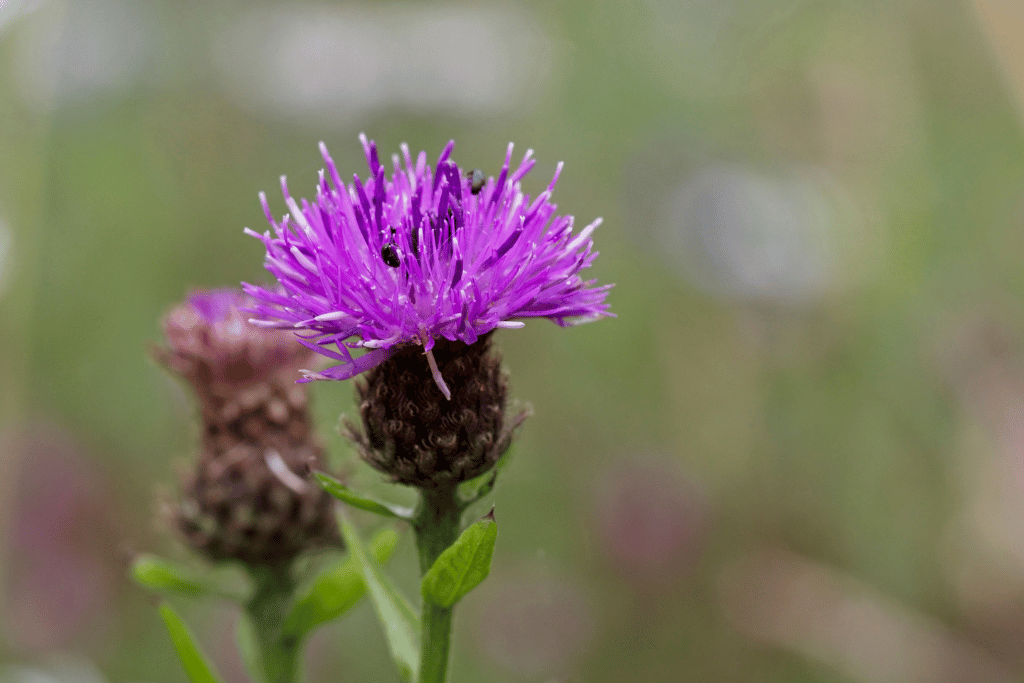
Originating from Europe and Asia, these plants create elaborate blossoms in varying tones of pink, purple, and blue. Frequently, the flowers exhibit a spiky, thistle-like look. Knapweed, scientifically referred to as Centaurea, is a wildflower that introduces a hint of untamed elegance to outdoor scenery.
Knapweed’s ability to thrive in poor soils and its resilience make it a valuable choice for naturalistic gardens and meadows. Its nectar-rich blooms attract a variety of pollinators, contributing to the health of local ecosystems. Knapweed’s presence reminds us of the beauty and importance of preserving native plant species and their role in supporting biodiversity.
6. Kerria – Golden Elegance in Early Spring
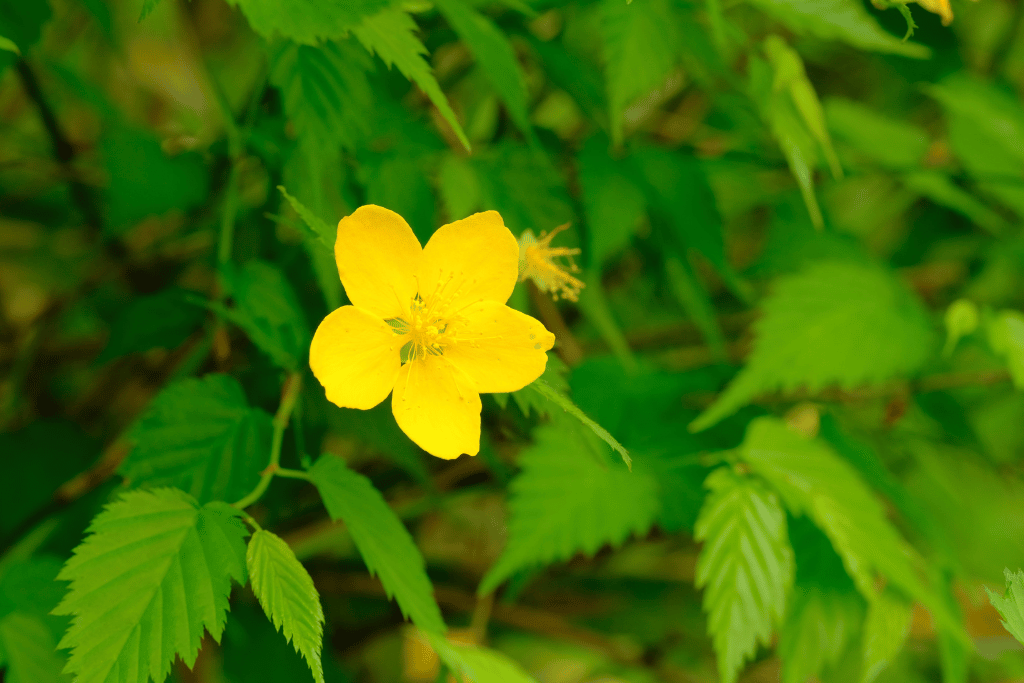
Kerria produces bright yellow, single, or double flowers in early spring. The blooms contrast beautifully with the plant’s green stems. This yellow queen native from China, known as Kerria japonica in scientific language, is a deciduous shrub that adds a touch of golden elegance to gardens.
Kerria’s ability to thrive in various soil types and its preference for partial shade make it a versatile choice for woodland gardens and shaded areas. Its cheerful blooms herald the arrival of spring and symbolize the renewal and vibrancy of the natural world.
7. Kolkwitzia – Graceful Beauty in Spring
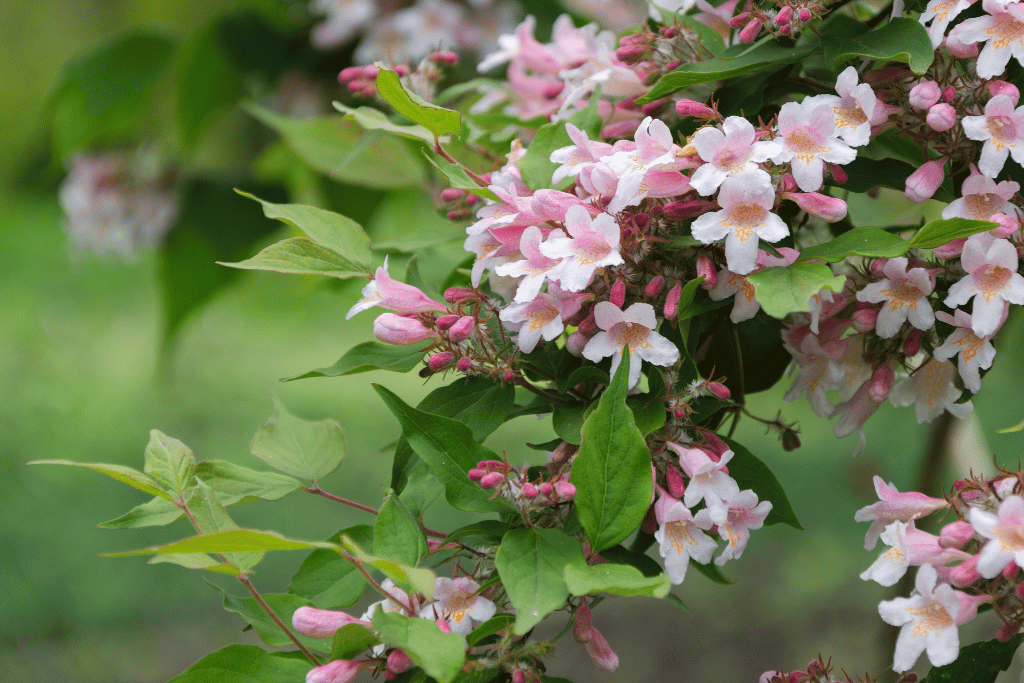
Kolkwitzia, commonly known as Beautybush, is a flowering shrub that graces landscapes with its delicate and graceful appearance. Native to China, this plant produces arching branches adorned with clusters of pink or white tubular flowers in spring. Its delicate blooms and cascading branches evoke a sense of natural elegance, showcasing the harmonious beauty of nature’s designs.
Kolkwitzia’s ability to thrive in full sun to partial shade and its low-maintenance nature make it a valued addition to gardens and borders.
8. Knotweed – Hardy Perennial with Intriguing Blooms
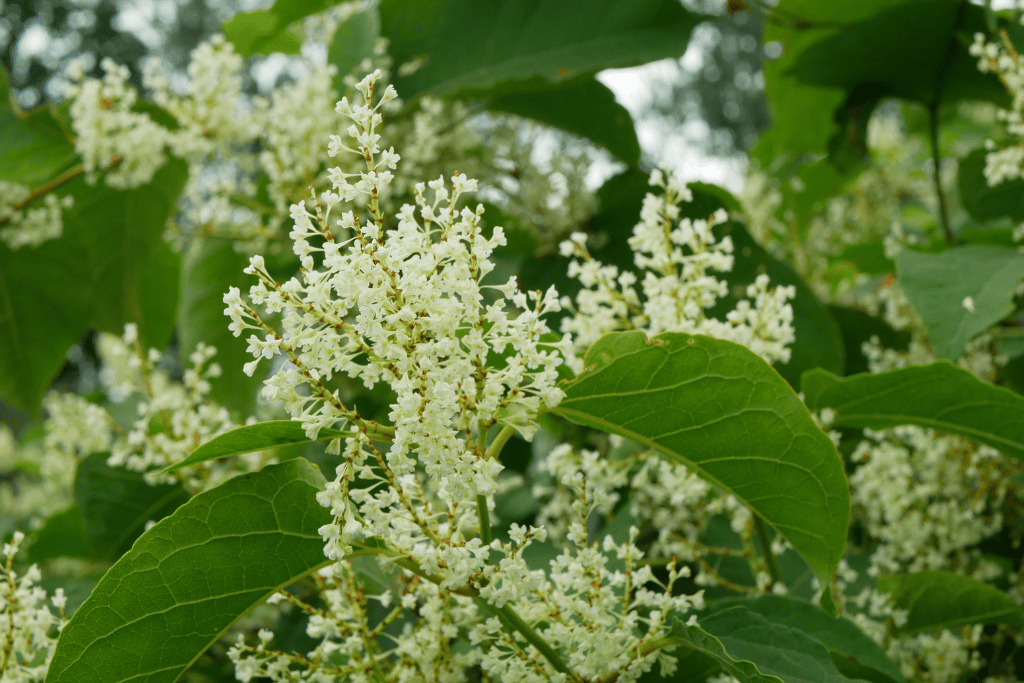
Knotweed flowers’ vertical growth adds height and structure to garden beds. These plants produce spiky inflorescences in shades of white, pink, or red. These tiny star-like flowers, botanically referred to as Persicaria, are a hardy perennial that adds an intriguing touch to gardens with its unique flower clusters.
Knotweed’s ability to adapt to various soil conditions and its resilience make it a valuable choice for creating visual interest in both formal and informal landscapes. Its clusters of flowers, resembling tiny fireworks, infuse a sense of liveliness and movement into garden designs.
9. Kirengeshoma – Subtle Elegance in Shade Gardens
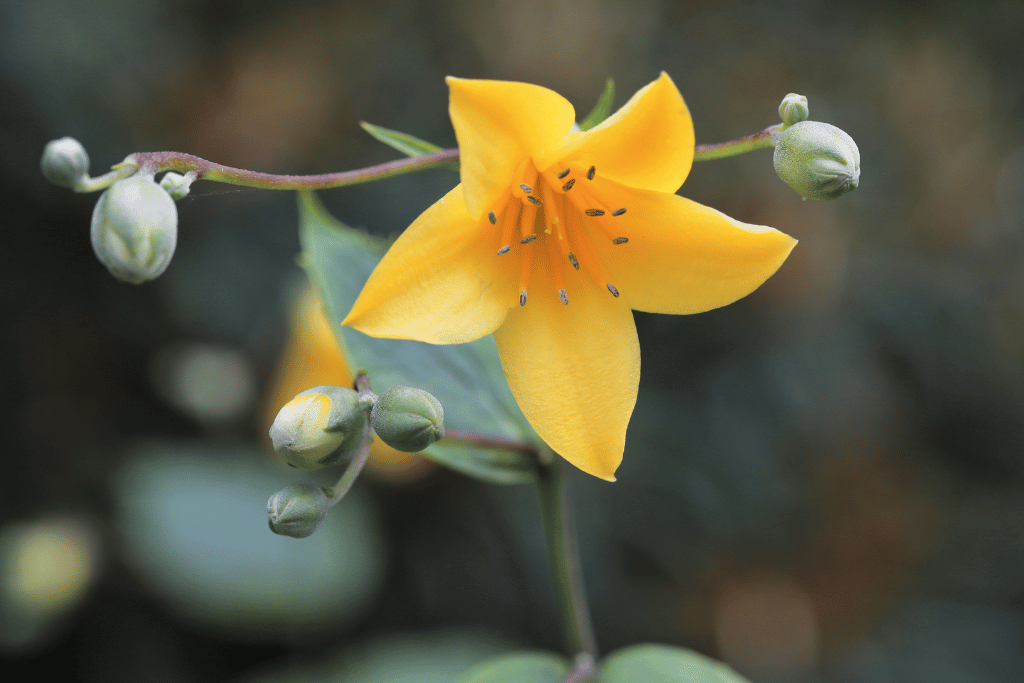
Kirengeshoma’s preference for partial to full shade and its ability to thrive in moist soil make it an excellent choice for woodland gardens and shaded borders. The flowers’ intricate form adds an air of elegance to shaded areas. Its understated beauty and adaptability to low light conditions remind us that even in the quiet corners of the garden, nature weaves its own tapestry of enchantment.
Native to Japan and Korea, this plant produces bell-shaped flowers in shades of yellow that hang beneath its lush foliage. Kirengeshoma, commonly known as Yellow Wax Bells, is a perennial plant appreciated for its subtle yet captivating blooms.
10. King Protea – Majestic Emblem of South Africa
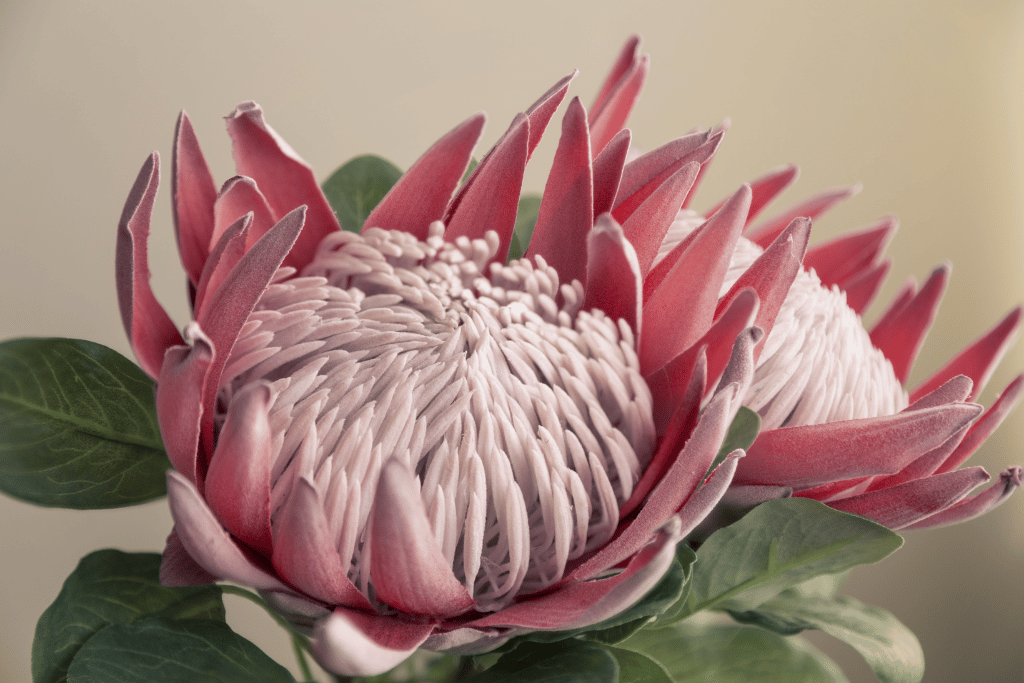
King Protea, scientifically known as Protea cynaroides, is a striking flowering plant that serves as the national flower of South Africa. This evergreen shrub produces enormous and intricate flower heads with a central cone surrounded by colorful bracts. The blooms come in a variety of hues, including shades of pink, white, and red.
King Protea’s unique appearance and its symbolism as a representation of beauty, diversity, and courage make it a treasured addition to floral arrangements and gardens. The plant’s regal name reflects its commanding presence, reminding us of the power and majesty found in nature’s creations.
11. Kniphofia – Fiery Torch-Like Blooms
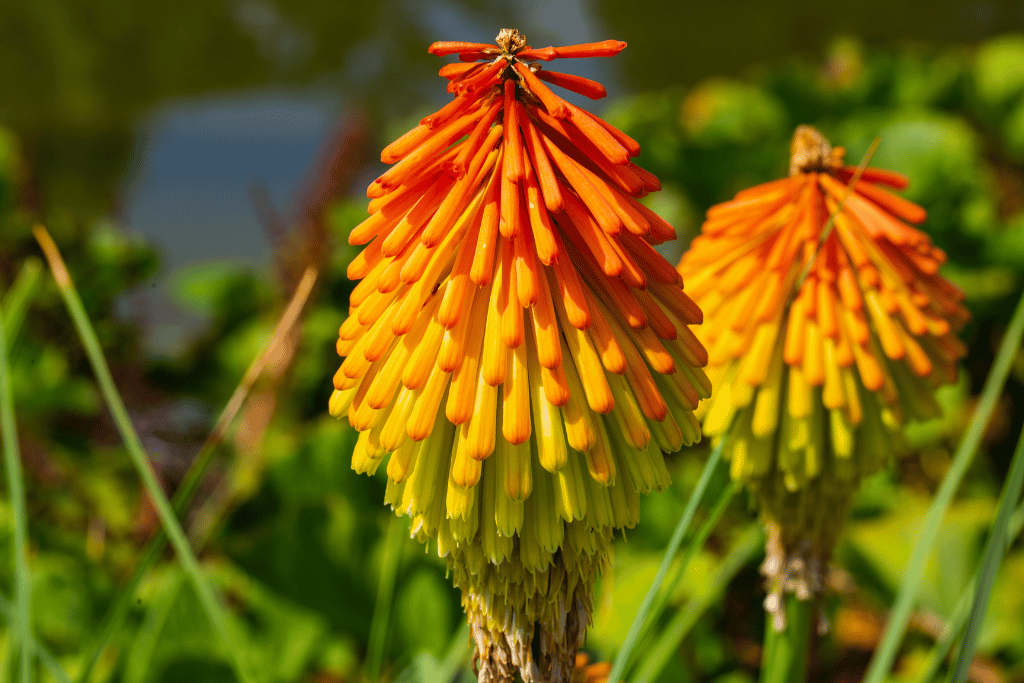
Native to Africa, these plants produce tall spikes of tubular flowers in shades of red, orange, and yellow. The flowers are arranged closely together, resembling a torch or poker. Its vertical growth adds an element of drama to garden designs, and its presence stands as a reminder of nature’s ability to captivate through vivid hues.
Kniphofia’s striking appearance and its ability to attract hummingbirds and pollinators make it a favored choice for gardens seeking bold bursts of color. Kniphofia, commonly known as Red Hot Poker or Torch Lily, is a perennial plant known for its vibrant and fiery blooms.
12. Kigelia – Unique Sausage-Shaped Fruit
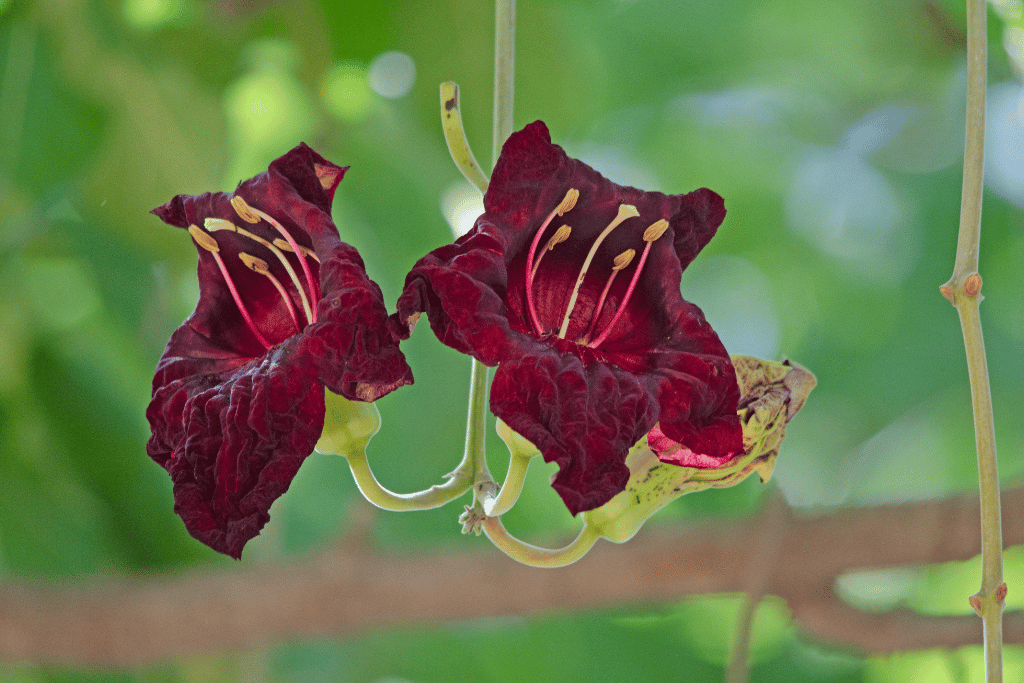
Kigelia, botanically known as Kigelia africana, is a tree native to Africa that produces intriguing and unique sausage-shaped fruit. The tree also features bell-shaped flowers with maroon or reddish petals that hang down from long stalks. The large fruits, often referred to as “sausages,” can weigh several kilograms and have traditional uses in some African cultures.
Kigelia’s distinctive appearance and its value in traditional medicine highlight the cultural significance of certain plant species. The tree’s shade-providing canopy and its unusual fruit contribute to its mystique in landscapes, reminding us of the diverse roles that plants play in human societies.
13. Kalmiopsis – Rare Beauty in Mountainous Landscapes
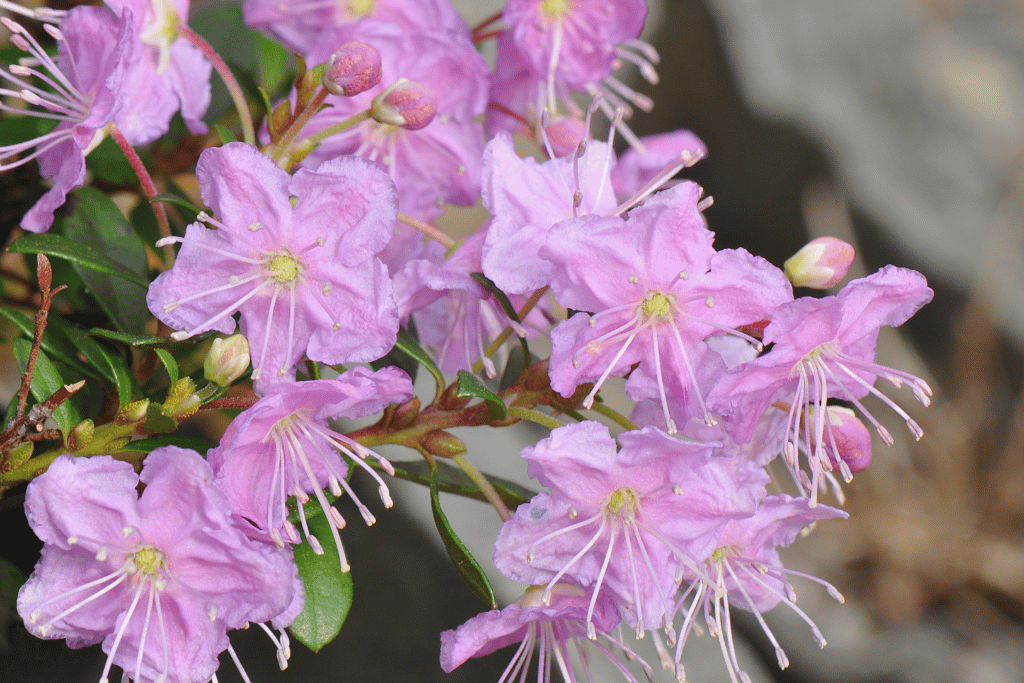
Kalmiopsis’s ability to thrive in harsh conditions and its unique niche within mountainous ecosystems make it a prized find for plant enthusiasts and botanists. The plant’s resilience and its ability to find a foothold in challenging terrains exemplify the tenacity of nature’s creations.
Kalmiopsis, scientifically known as Kalmiopsis leachiana, is a flowering shrub that flourishes in high-elevation and rocky environments. Native to the Pacific Northwest of North America, this plant produces bell-shaped flowers that range from pink to lavender. Its small but vibrant blooms grace alpine meadows and rocky slopes.
14. Korean Bellflower – Graceful Bell-Shaped Blooms
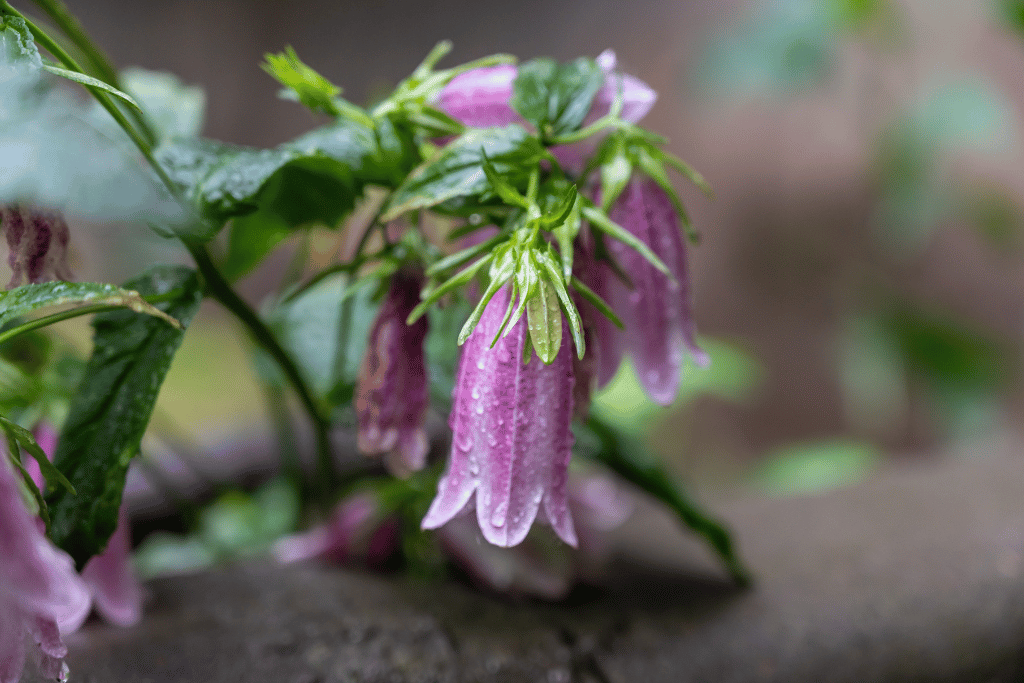
Korean Bellflower, bell-shaped flowers sway gently in the breeze, offering a sense of delicate beauty that harmonizes with the surroundings. Scientifically known as Platycodon grandiflorus, is a perennial plant celebrated for its charming bell-shaped blooms.
Native to East Asia, including Korea, China, and Japan, this plant produces flowers in hues of blue, purple, and white. The blossoms open from distinctive balloon-like buds. Korean Bellflower’s adaptability to various soil types and its low-maintenance nature make it a popular choice for gardens and borders.
15. Kaleidoscope Roses – Whimsical Palette of Colors

Kaleidoscope Roses are a captivating variant of the classic rose, offering a stunning array of colors in a single bloom. These roses are a result of careful breeding and genetic manipulation, resulting in petals that display multiple hues, often resembling the vibrant patterns seen through a kaleidoscope. The petals can showcase combinations of reds, pinks, oranges, and yellows.
These rainbow like roses exemplify the artistry that can be achieved through horticultural innovation. Their playful and ever-changing appearance brings a touch of enchantment to gardens and floral arrangements. These roses symbolize the infinite possibilities that nature and human creativity can combine to create.
16. Kalanchoe – Hardy Succulents with Vivid Blooms
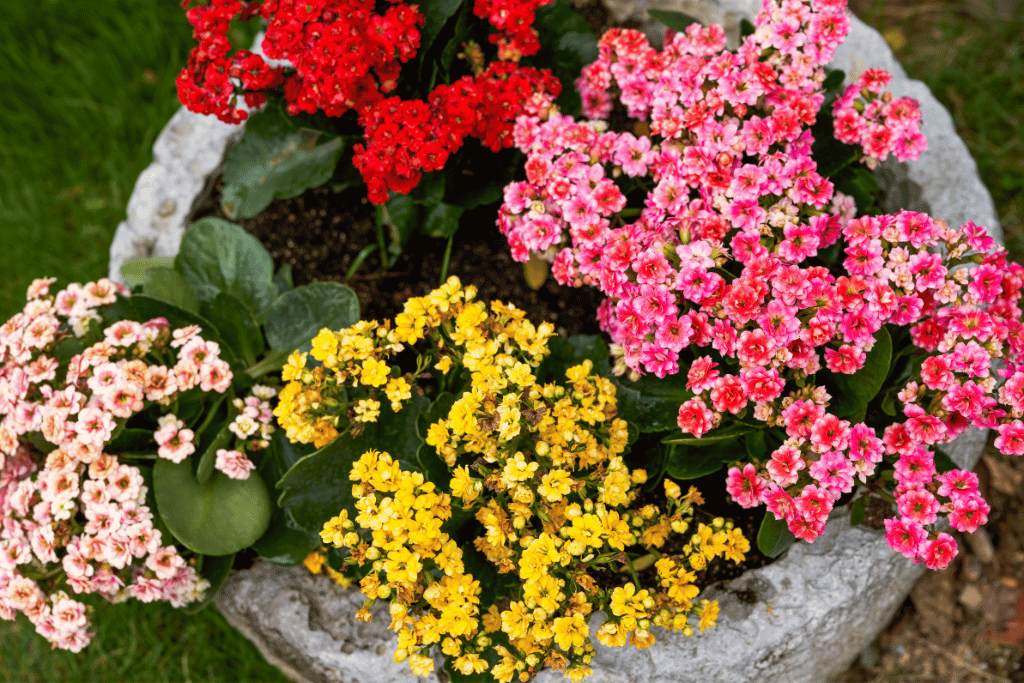
Kalanchoe, a genus encompassing various species, is a group of succulent plants admired for their colorful and long-lasting blooms. Native to arid regions, these plants feature thick, fleshy leaves and clusters of vibrant flowers that can be shades of red, pink, orange, or yellow. Kalanchoes are often cultivated as houseplants or for outdoor gardens in warmer climates.
Kalanchoe’s blooms bring a burst of color to spaces while reminding us of the beauty that can emerge from unexpected places. Kalanchoe’s ability to thrive in dry conditions and its striking blossoms make it a popular choice for those seeking low-maintenance yet visually rewarding plants. Its resilience and adaptive nature reflect the tenacity of life in challenging environments.
17. King’s Spear – Stately Accent in Garden Borders
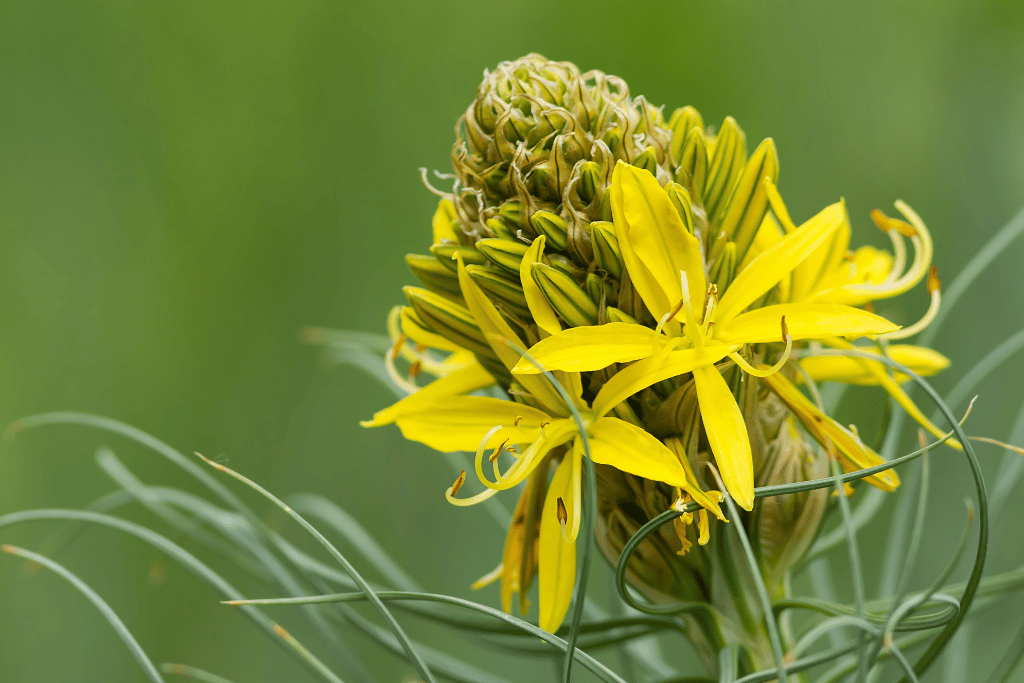
King’s Spear, scientifically known as Asphodeline lutea, is a perennial plant that adds a stately presence to gardens with its tall spikes of yellow flowers. Native to Europe and Asia, this plant’s flower spikes rise above the foliage, creating vertical interest and a regal appearance. The blossoms are reminiscent of lilies or asphodels.
Its architectural form and striking blooms contribute to its role as a focal point in garden designs. King’s Spear’s name and appearance evoke images of noble gardens from times past, adding a touch of history to modern landscapes. King’s Spear’s ability to thrive in well-drained soil and its tolerance for dry conditions make it well-suited for sunny garden borders.
18. Kiss-me-over-the-garden-gate – Whimsical Charm in Pink
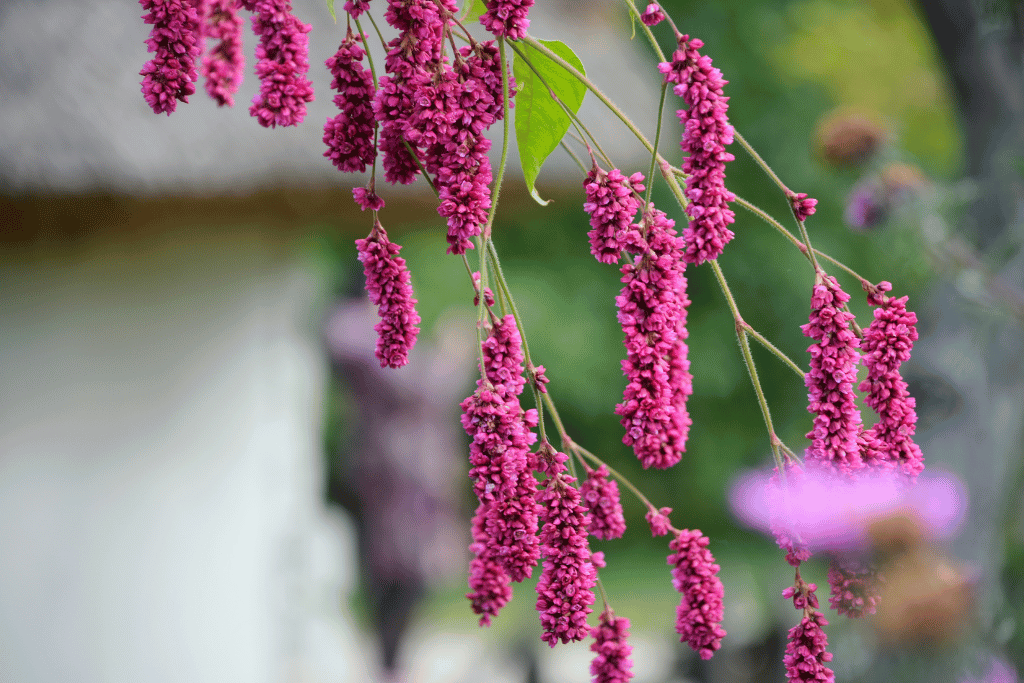
The name “Kiss-me-over-the-garden-gate” is as delightful as its appearance. Originating from Asia, this yearly plant showcases graceful pink flowers that hang delicately in cascading clusters from lofty stems. Kiss-me-over-the-garden-gate, scientifically known as Persicaria orientalis, is a flowering plant that adds a whimsical touch to garden beds and borders.
This plant’s graceful form and its ability to attract pollinators like bees and butterflies make it a valuable addition to cottage gardens and naturalistic landscapes. Its name conjures images of romance and secret rendezvous, adding a touch of storytelling to garden designs. Kiss-me-over-the-garden-gate’s playful elegance exemplifies the joy that nature can bring.
19. King’s Mantle – Majestic Foliage with a Tropical Flair
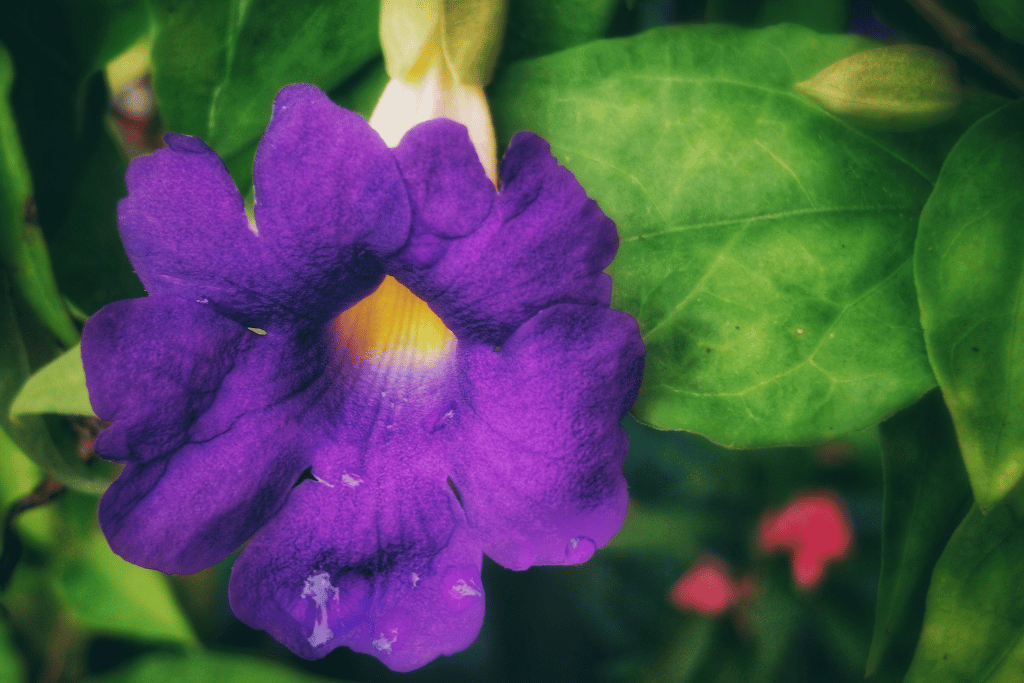
King’s Mantle, scientifically known as Thunbergia erecta, is a tropical shrub known for its striking foliage and attractive blooms. Native to Africa, this plant features large, dark green leaves that provide a lush backdrop to its clusters of tubular flowers. The blooms can be shades of white, pink, or violet.
King’s Mantle’s preference for full sun and its ability to create a tropical atmosphere in gardens make it a favored choice for landscapes in warmer climates. Its dense foliage and colorful flowers attract attention from humans and pollinators alike. King’s Mantle’s regal appearance and lush growth remind us of the lush beauty that tropical plants bring to outdoor spaces.
20. Kokio – Rare Hawaiian Endemic
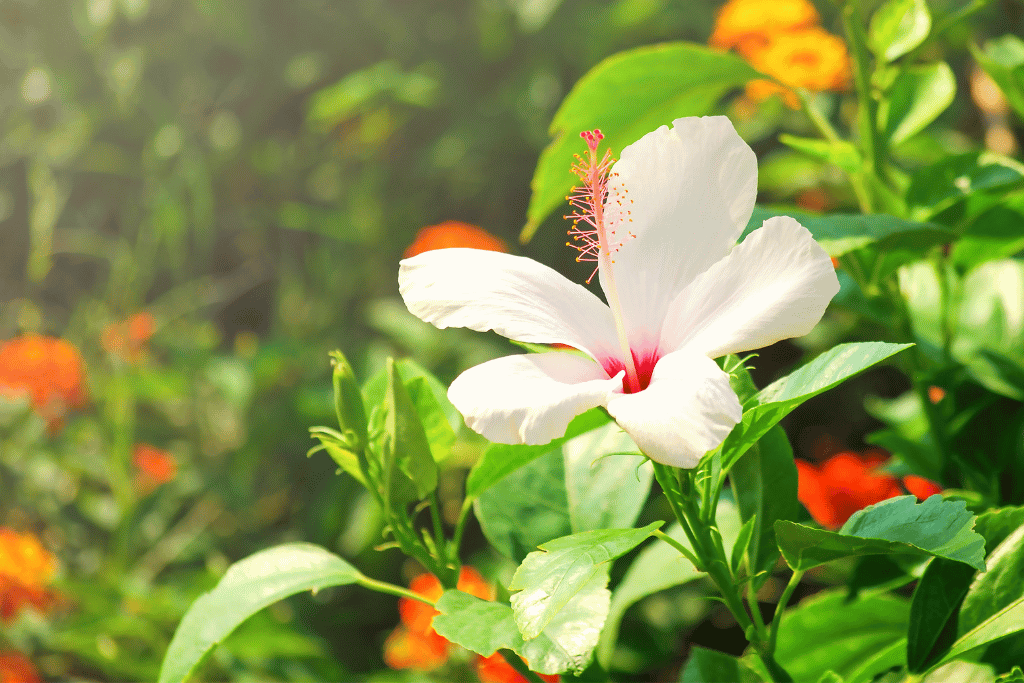
Kokio’s scarcity and its significance in Hawaiian ecosystems highlight the importance of conservation efforts. Its delicate blooms and cultural significance remind us of the fragility of certain plant species and the need to protect and preserve them for future generations.
These trumpet-shaped flowers, botanically known as Kokio keokeo, is a rare Hawaiian flowering shrub that showcases its beauty with white, trumpet-shaped blossoms. Endemic to Hawaii, this plant is part of the unique native flora of the islands. It is critically endangered and found in only a few locations in the wild.
21. Kaleidoscope Daisy – Colorful Garden Delight
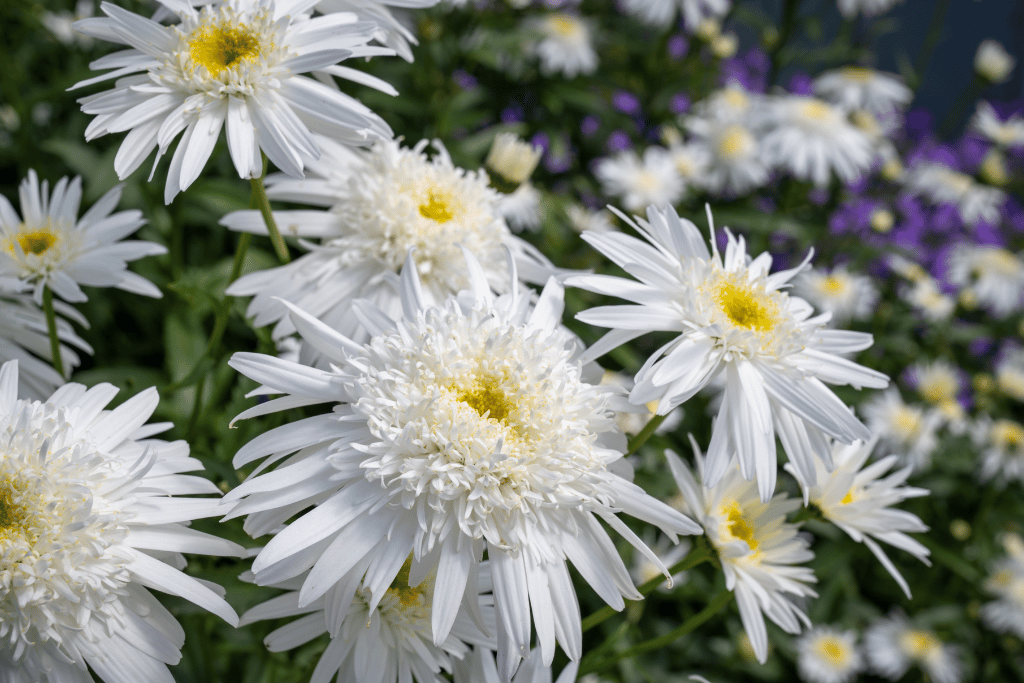
Kaleidoscope Daisy, scientifically known as Leucanthemum superbum ‘Kaleidoscope’, is a modern hybrid of the classic Shasta Daisy. These daisies are known for their large, white petals surrounding a bright yellow center. They add a burst of charm to gardens with their timeless appeal and adaptability.
Kaleidoscope Daisies’ ability to thrive in various soil types and their long-lasting blooms make them a popular choice for gardens and borders. Their classic beauty captures the essence of sunny days and cheerful landscapes.
22. Kopsia – Fragrant Blooms of the Tropics
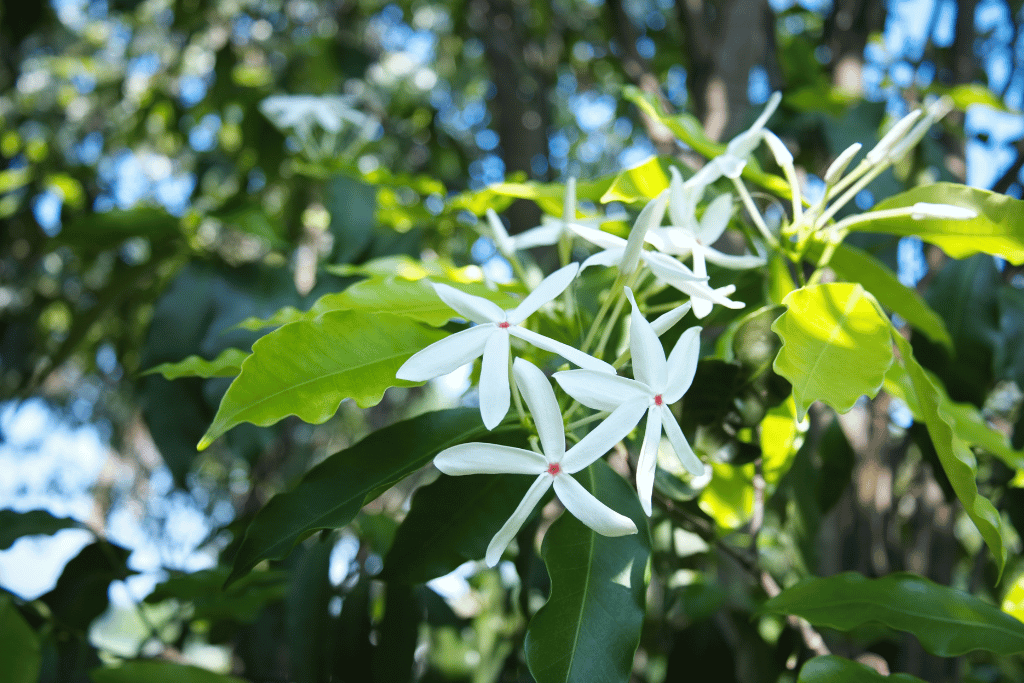
Kopsia’s charming blossoms and its preference for warm and tropical climates make it a cherished addition to gardens in those regions. Its fragrant presence adds sensory pleasure to outdoor spaces and underscores the sensory richness of nature.
Kopsia produces fragrant, star-shaped flowers with white or pale pink petals. The blooms emit a delightful fragrance that wafts through the air. Scientifically known as Kopsia fruticosa, it is a flowering shrub or small tree native to Southeast Asia and the Pacific Islands.
23. Kaempferia – Intriguing Patterns Beneath the Leaves

Kaempferia, commonly known as Peacock Ginger or Zingiberaceae, is a genus of flowering plants native to tropical Asia. While its small, inconspicuous flowers are often overshadowed by its most distinctive feature: the leaves. The leaves of Kaempferia boast intricate patterns and colors reminiscent of peacock feathers.
Its unique leaf patterns remind us of the intricate beauty that can be found in unexpected places. Kaempferia’s captivating foliage and its preference for humid and shaded environments make it a sought-after choice for tropical gardens and indoor collections.
24. Kunzea – Delicate Beauty of Native Landscapes
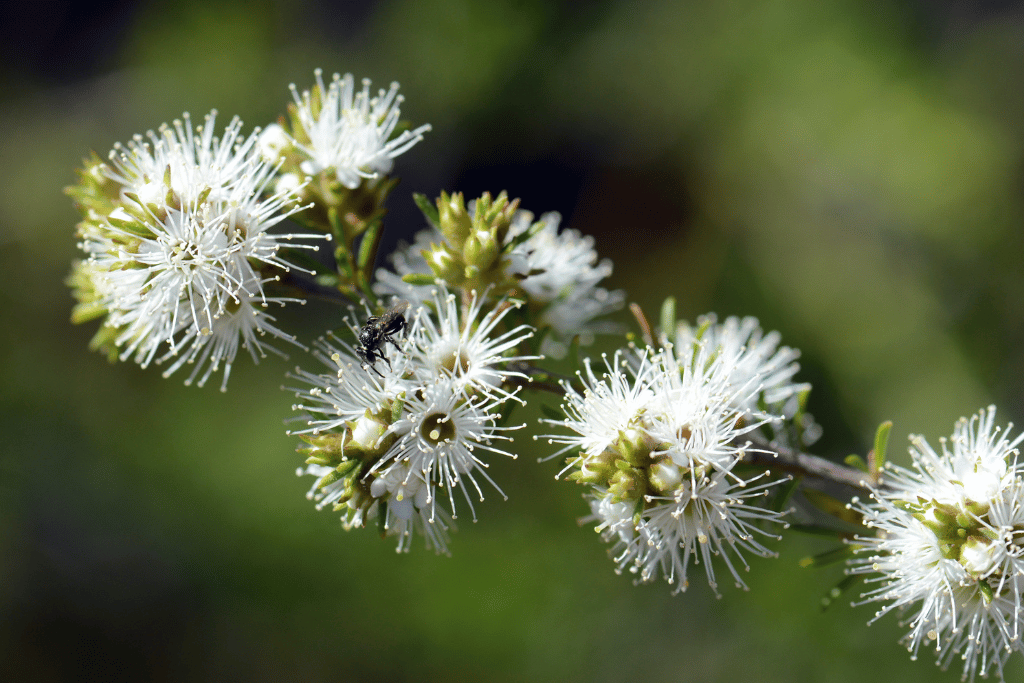
Kunzea, a genus of flowering plants native to Australia and New Zealand, offers a delicate beauty that reflects the unique landscapes of these regions. The plants within this genus vary in size and appearance, but they often produce clusters of small flowers in shades of white, pink, or purple. The blooms contribute to the ecological diversity of their native habitats.
Kunzea’s importance in supporting local ecosystems and its potential medicinal uses in traditional practices underscore the deep connections between plants and human well-being. Its presence in gardens around the world highlights the value of preserving and appreciating the flora of different regions. Kunzea’s blooms echo the resilience and adaptability of plants in diverse environments.


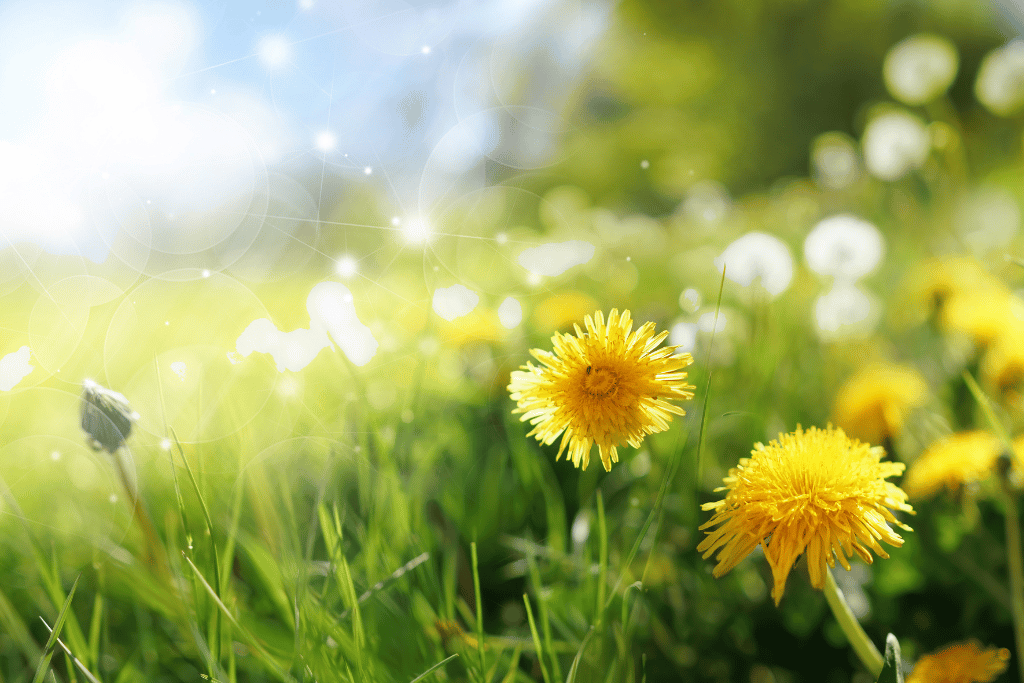
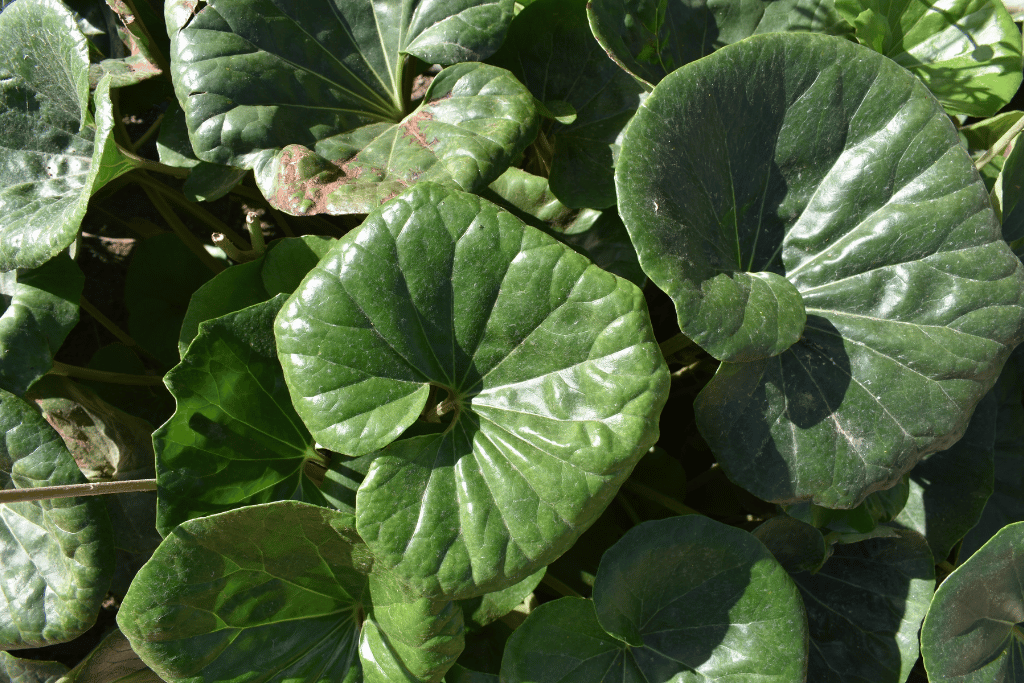
Pingback: Flower Names Start With K - Markt Value